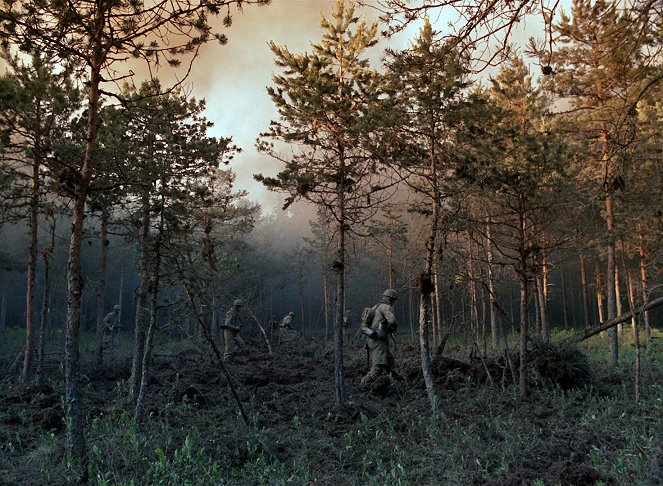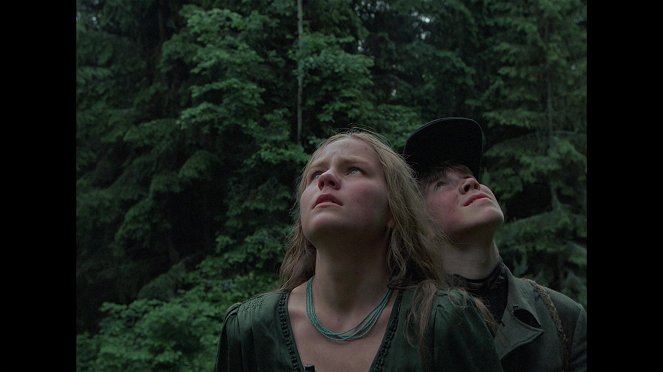Directed by:
Elem KlimovCinematography:
Aleksey RodionovPlots(1)
This legendary film from Soviet director Elem Klimov is a senses-shattering plunge into the dehumanizing horrors of war. As Nazi forces encroach on his small village in Belorussia, teenage Flyora (Alexei Kravchenko, in a searing depiction of anguish) eagerly joins the Soviet resistance. Rather than the adventure and glory he envisioned, what he finds is a waking nightmare of unimaginable carnage and cruelty—rendered with a feverish, otherworldly intensity by Klimov’s subjective camera work and expressionistic sound design. Nearly blocked from being made by Soviet censors, who took seven years to approve its script, Come and See is perhaps the most visceral, impossible-to-forget antiwar film ever made. (Criterion)
(more)Videos (1)
Reviews (7)
A tragic image of war, destroying everything not only physically but forever destroying even those who were not directly affected at first sight. The expression on the main protagonist's face speaks for itself - attempting to squeeze such horror and inhumanity, which he witnessed, into ordinary (not only cinematic) phrases is simply impossible. Just like it is impossible to truly comprehend the fact of more than 20,000,000 killed inhabitants of the Soviet Union, truly enormous, yet still only one single country. The final scene is thus an example of the genius of the film, and of cinema itself.
()
Boredom – boredom – powerful scene. Boredom – filler – powerful scene. Filler – filler – hugely powerful scene. Over and over. A strong, but not at all exception message (you can “find" it elsewhere), and it doesn’t really work as a movie; it is too unrefined in its messages and puts its money on the gut reaction to wartime atrocities. But if you let the distinctive rhythm of the storytelling wave over you and allow yourself be stirred from you trance only for the powerful scenes, then you will find this a rewarding watch. So it’s a sort of “wake up and take a look" affair.
()
In its apocalyptic and surreal visions, crowned with typical Russian reckless abandon (cheerful partisans fleeing from gunfire with a mocking scarecrow in the form of a life-size Hitler), the film is certainly at its strongest, and its attempt to portray the occupation as a bloody mess on wheels gives the impression of a traumatic childhood memory or a pointless nightmare. There is a flip side to this, however, which is that at times the film goes beyond anti-Germanic exploitation as it hysterically enumerates all the stereotypes of Nazi occupiers snacking on lobsters while burning down churches full of people, breeding exotic monkeys, and when they are finally caught red-handed, either cowardly blaming one another or delivering a focused monologue about the need to annihilate the Slavic race. It's clear to me that, given that co-writer Adamovich was an actual witness to similar events and the script itself was based on dozens of survivor testimonies, it's hard to ask for any kind of detachment in the treatment of such themes, but the picture of absolute evil without context that we are presented with here seems a bit over the top in those two scenes.
()
Incredibly psychologically depressing for its time, brutal in places, especially in the second half (I think it was the only Soviet film that was released in cinemas under the Bolshevik regime with the rating "No access to children under 18!"), an extremely impressive film from the time of the Nazi extermination campaign in the Soviet Union. A little boy's family is murdered and he joins the partisans. After the opening, somewhat drawn-out half-hour, Klimov begins to emotionally pummel the viewer with such vigour that it's borderline unbearable in places. During filming, a psychiatrist was constantly by the boy lead's side to make sure that the psychologically demanding filming did not take a toll on his mental health – without success, though. In terms of direction, it’s brilliant. There are two scenes I’ll never forget, the first is when the protagonist walks through his native village, which had been massacred by the Nazis a few days before. There are no naturalistic shots, only subtle, frightening hints, and a single glance through the camera, as if in passing, illuminates the horrific reality. And the second scene at the end, a scene that went down in film history: the slaughter of a Belarusian village by SS troops, and the burning of its inhabitants in a nearby barn. The ghetto-clearing scene in Spielberg's Schindler's List doesn’t come even close. It’s hard to describe, you have to see it. An unforgettable experience.
()
Yuck! It's not "yuck" in terms of the film's quality, but it's "yuck" in terms of what a person is capable of. I know, it's just a movie, but it could easily be a documentary because these atrocities do happen. And sometimes you don't even need blood to be knocked out by a scene. For example, the photo shoot is incredibly scary.
()
Gallery (49)
Photo © Mosfilm



Ads